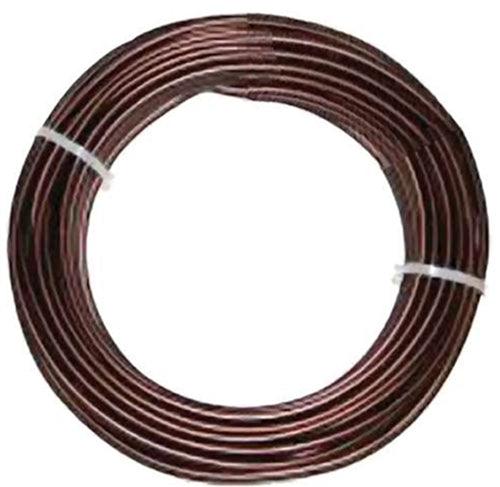Eisei-en & Bjorn’s Big Bonsai Weekend
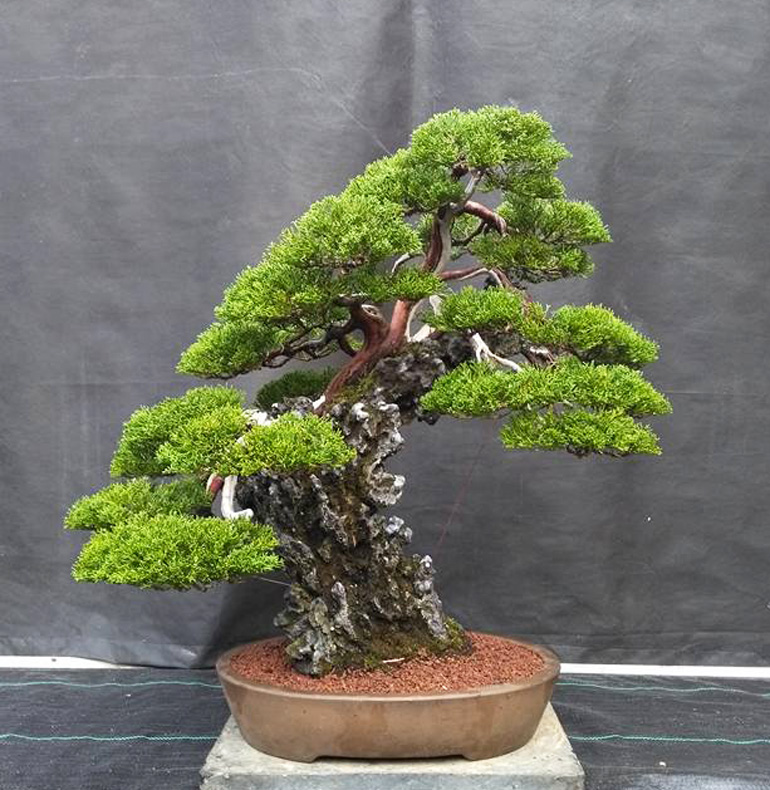
I found this Shimpaku rock planting in a vast array of Bjorn Bjorholm's online photos. I couldn't find any text with the photo, so it's hard to tell if it's a root-over-rock (if it is, the root must be on the other side) or a on root-on-rock. No matter, it's great tree
Continuing with our North American bonsai series in our lead up to the 6th U.S. National Bonsai Exhibition... Though our goal is encourage you to visit the 6th U.S., we’d be remiss if we passed on Bjorn Bjorholm’s Eisei-en grand opening
Here’s a quote from Bjorn about his new nursery and the grand opening… “After months of planning, preparation and building, we are excited to announce the Grand Opening Event of Eisei-en Bonsai Garden in Mount Juliet, TN on September 1-2, 2018!
Continued below…

Bjorn continued from above…
“The event is open to the public from 9am-5pm both days, with free demonstrations by Naoki Maeoka (Japan) and Mauro Stemberger (Italy). All bonsai, yamadori and ceramics will be discounted 10% during the event.”
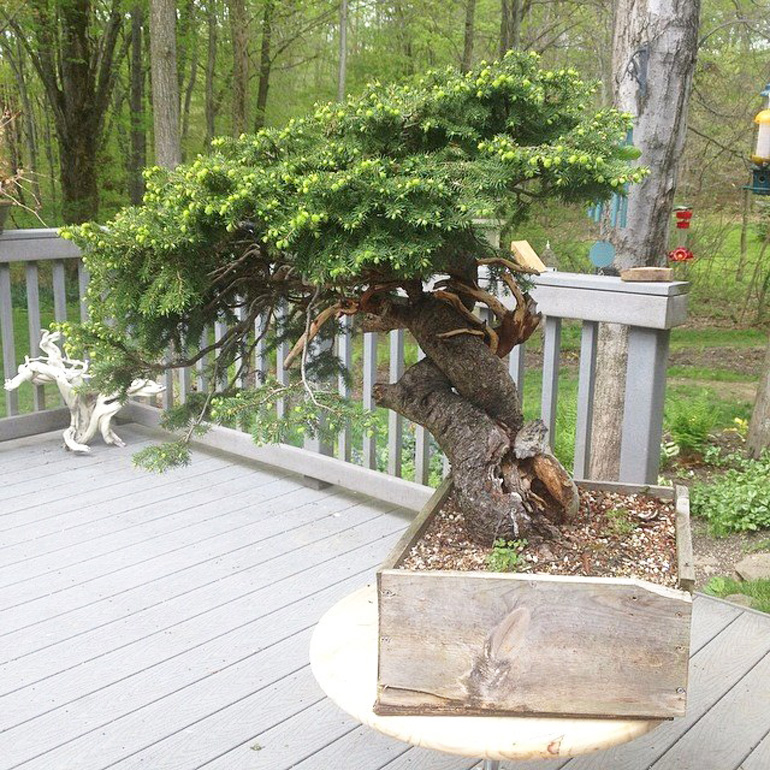
Bjorn's Bird's nest spruce (Picea abies 'Nidiformis)
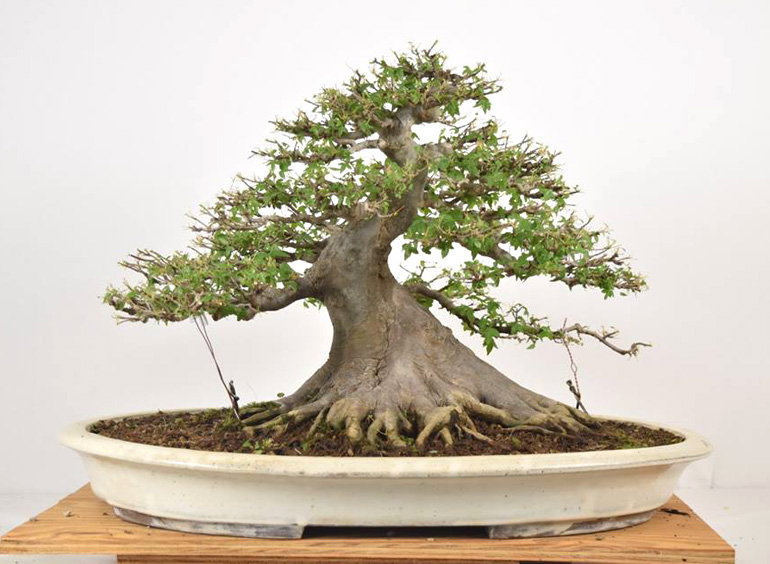
I couldn't find any copy with this one, though it looks like it must be a Trident maple in early spring leaf
Valentin’s Bonsai Behemoth
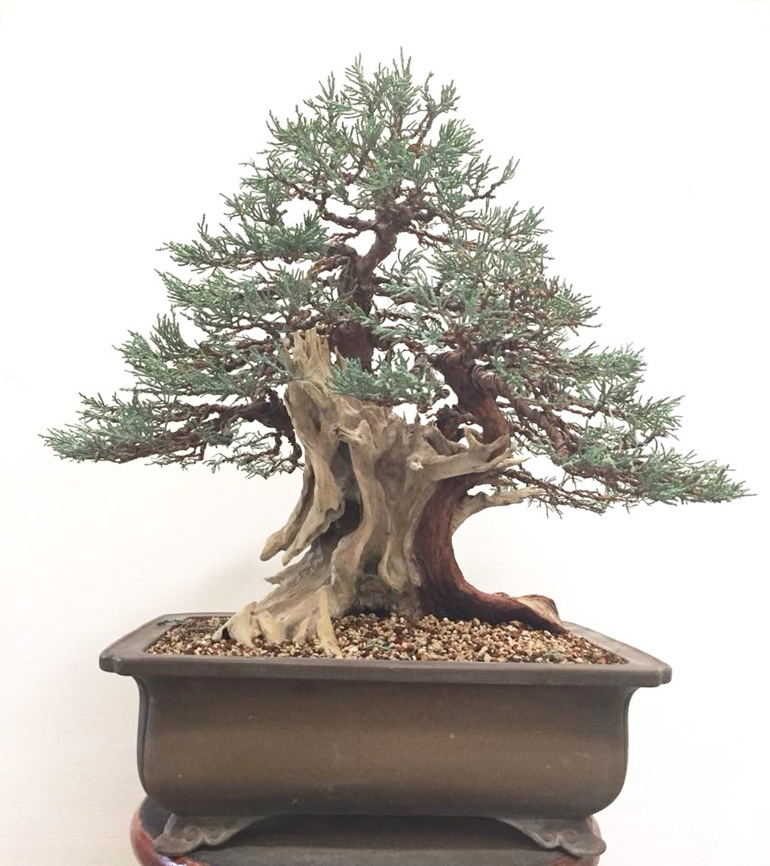
This is what can happen to an old bonsai behemoth in the hands of the right artist. In this case the hands belong to Valentín Cruz. The tree is a yamadori (collected from the wild) Sierra juniper (Juniperus occidentalis)
Continuing with North American bonsai in our lead up to the 6th U.S. National Bonsai Exhibition… It wasn’t long ago I stumbled upon the bonsai of Valentín Cruz, a remarkably skilled young bonsai artist who lives and practices his art in Northern California. Valentín is a student of Jim Gremel, a highly respected bonsai artist and ceramicist, and the proprietor of Deer Meadow Bonsai and American Bonsai Ceramics
Continued below…

Before and after
It’s not too late to plan your trip to Rochester for the 6th U.S. National Bonsai Exhibition. If you’ve never been, you owe it to yourself. If you have been, you’ll understand why
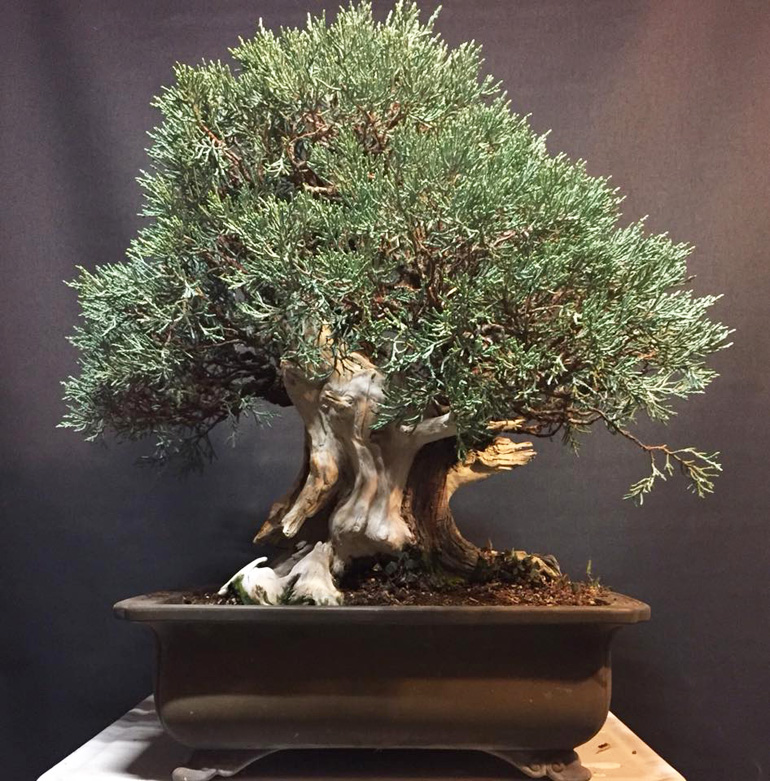
Before. It never hurts to start with good material
Cropped for a closer look at the shari and nebari

Perfect in its classical design. It's an Atlas ceder (Cedrus atlantica) by Jim Gremel, Valentin's mentor
Bonsai Boon and His Twenty Super Students
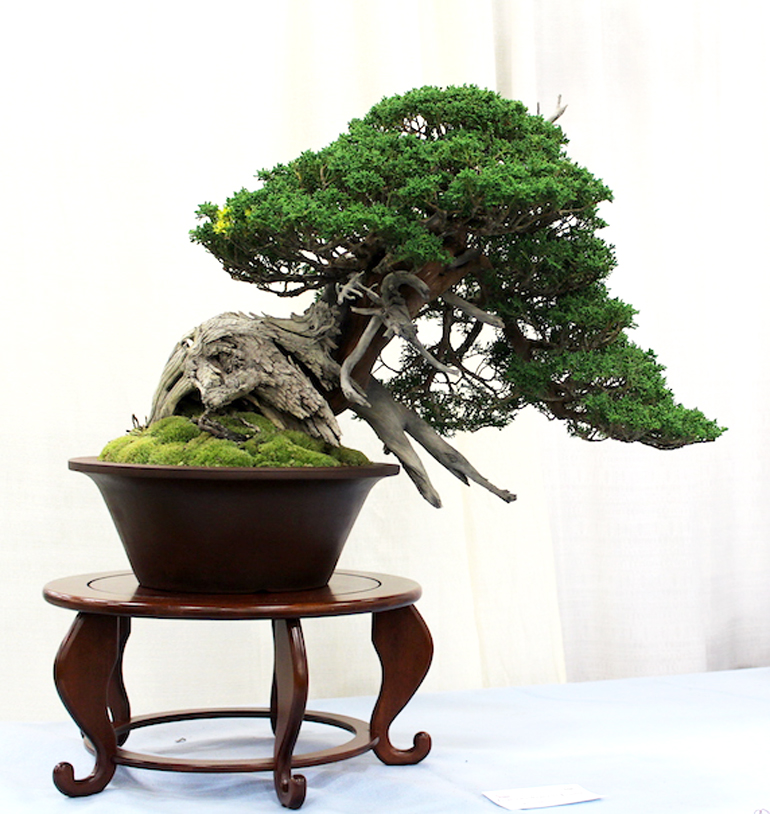
Boon Manakitivipart's Itoigawa Sargent Juniper that won the Finest Medium Size Bonsai award at the 5th U.S. National Bonsai Exhibition. From a September, 2016 Bark post
Continuing with North American bonsai in our lead up to the 6th U.S. National Bonsai Exhibition…
The more I look at the tree above, the more I like it. But rather than go into specifics, I’ll just relate a quick story…. While I was admiring the tree at the 5th U.S. National, Boon walked by. I said something like ‘great tree, but only one?’ His reply was… “Yes, but twenty of my students have trees here.”
Boon Manakitivipart (Bonsai Boon) has long been of favorite of ours (and most everyone else). The five photos shown here are almost randomly picked from the dozens of Boon’s trees we’ve featured over the last nine years or so. As you can see, all are exceptional and there are many more where these came from
The tree is a Shore pine (Pinus contorta) that Boon was getting ready for Bay Island Bonsai’s 19th Annual Exhibit. From a January, Bark 2018 post
Another Itoigawa Shimpaku juniper, from a January, 2017 Bark post
You can tell this is a genuine Dwarf Kingsville boxwood by the tight tiny leaves. This planting by Boon Manakitivipart was the winner of the Certre Award at the 2010 U.S. National Bonsai Exhibition. From a December, 2016 Bark post
Boon's transformed Sierra juniper. If you go to Styling on Bonsai Boon you can see how Boon took this tree through an eight year bonsai journey. From an October, 2016 Bark post
NEW Bonsai T-Shirts & the 6th U.S. National
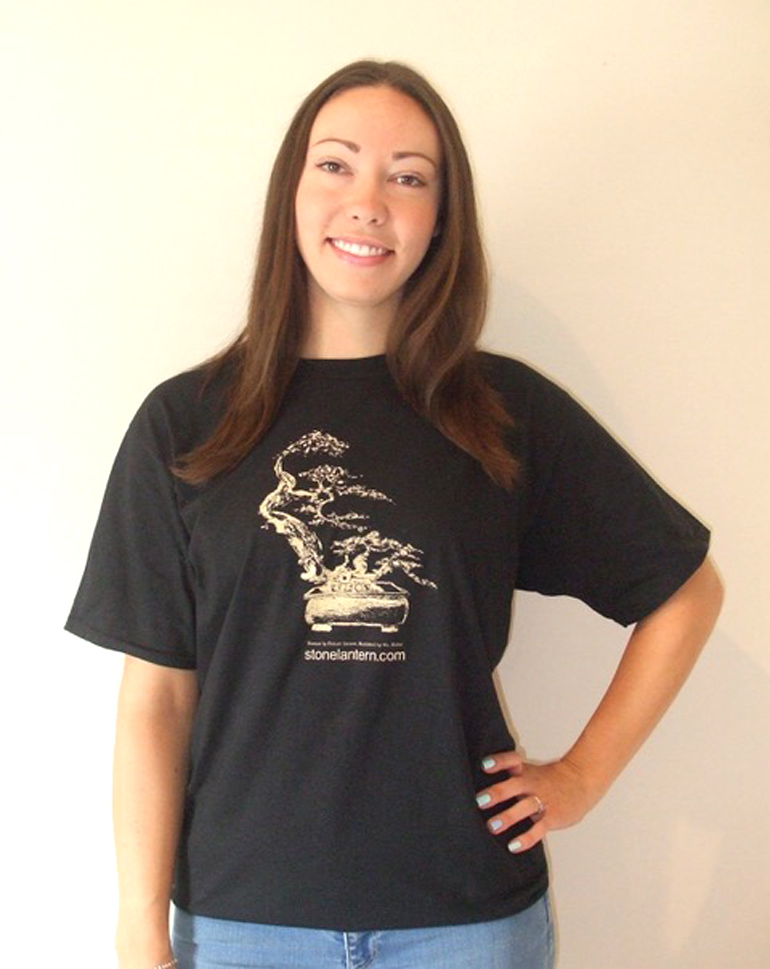
Our neighbor Sophie modeling our Brand NEW all cotton Stone Lantern T-shirt. And no, Sophie is not a professional model. Just a friend (and local police officer). You can order your T-shirt online for 20.00 plus a very modest shipping charge or save the shipping charge and pick one up at the upcoming 6th U.S. National Bonsai Exhibition
Continuing with our lead up to the 6th U.S. National Bonsai Exhibition (Rochester, NY, September 8th & 9th – it’s not too late to make your plans)… This time it’s our new T-Shirt that will accompany us to the show along with a wide range of bonsai essentials
One of our field grown American larches. We'll be bringing about 25 or so to the show along with a few other trees
Our New T-shirt design is from a photo of a Robert Steven bonsai that was illustrated by Ric Walter, who happens to be our warehouse manager, trouble shooter, artist, photographer (Ric took the photo of Sophie above) and of course friend
One of the many rare and out of print bonsai books we'll be offering at the Exhibition, along with a whole host of other items. In addition to the items shown in this post, we'll be bringing a very large selection of bonsai wire at great prices, our famous Roshi Bonsai Tools, Green Dream and other fertilizers and a whole host of other bonsai essentials. We hope to see you there!
Suthin’s Beautiful Beasts & the 6th U.S. National Exhibition
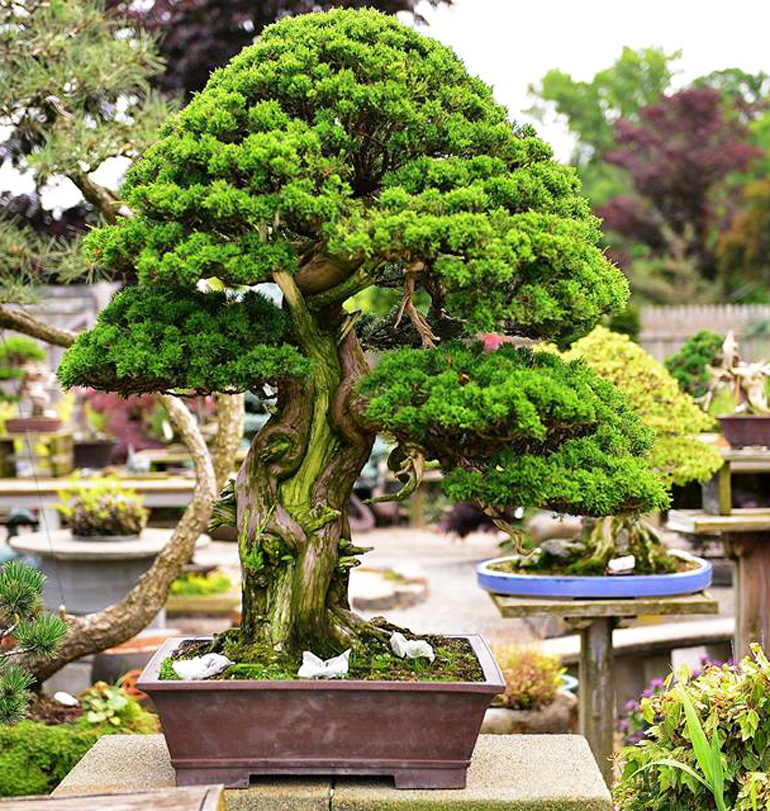
This beautiful beast with it rugged trunk and luminous foliage belongs to Suthin. Here's his caption... "#04 Shimpaku 'Itoigawa' Tree's height: 39 inches. Interesting PM. me. Pick up at US. National show in Rochester, NY. suthinbonsaistudio.com"
Continuing with American bonsai leading up to the 6th U.S. National Bonsai Exhibition (Rochester, NY, September 8th & 9th – it’s not too late to make your plans)… today it’s everybody’s friend Suthin (officially Suthin Sukosolvisit), another long time favorite here on Bark.
–
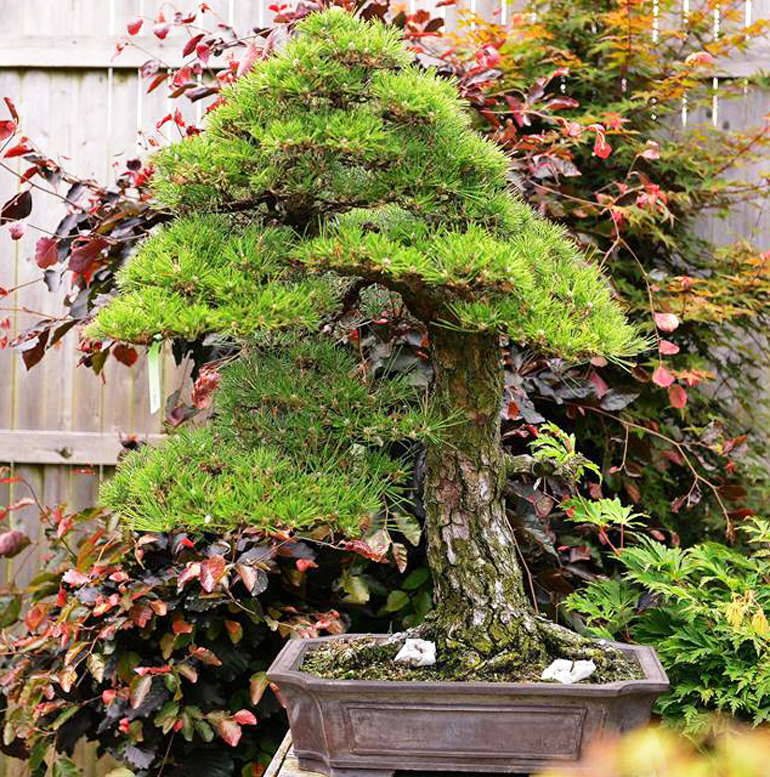
Here's another one you can arrange to pick up at the Exhibition. It's a Japanese black pine. Here's Suthin's caption... "#03 Japanese black pine 'Mikawa' Tree's height: 40 inches. Interesting PM. me. Pick up at US. National show in Rochester, NY. suthinbonsaistudio.com"
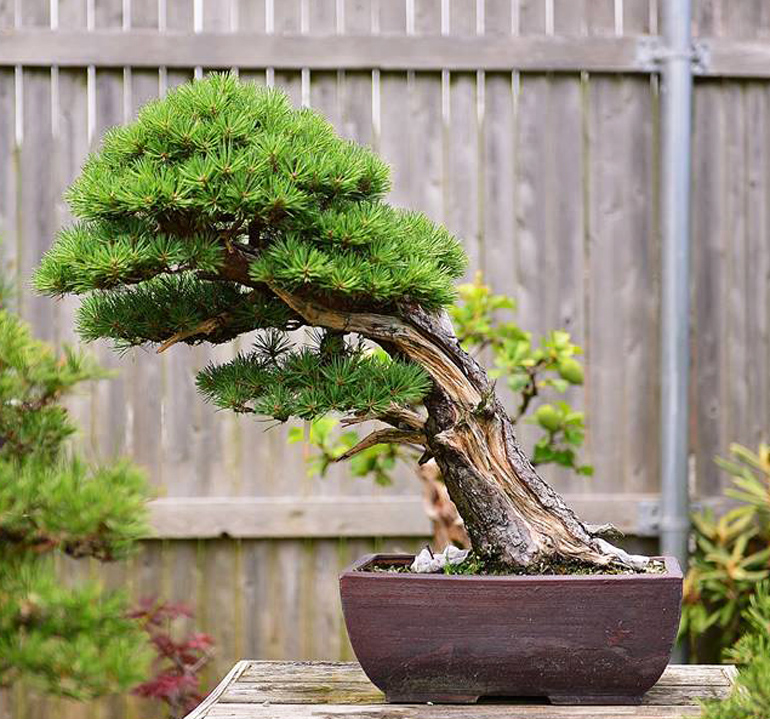
Scots pine. Suthin doesn't say anything about bringing this one to the Exhibition. If you're interested, you can ask him
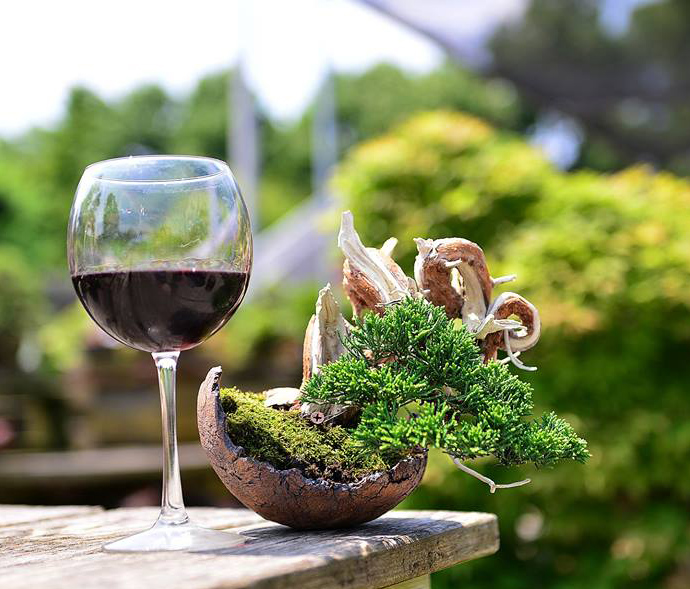
I don't think Suthin will be serving wine at the Exhibition, but maybe you can enjoy a glass with him at the banquet
A Juniper Orchid Bonsai – Michael’s Ingenious Before & After
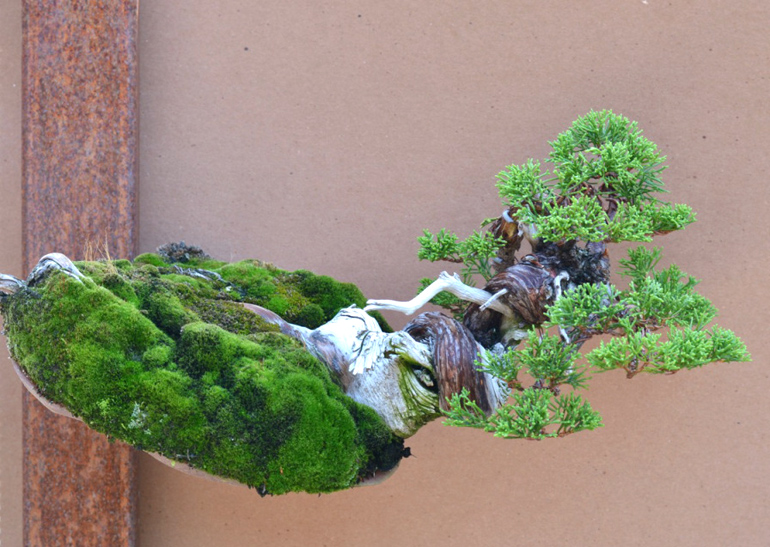
Michael Hagedorn's ingenious Juniper orchid. Here's part of what Michael wrote about this unlikely creation... "Some of you might remember a quirky Shore Pine that we put on a post in 2017, calling it the first Pine Orchid in the yard. Yesterday this juniper was styled, and it hangs on the neighboring post that supports the shade cloth structure (thank you Bobby Curttright). The juniper is a bit of a Frankenstein"
Continuing with American bonsai leading up to the 6th U.S. National Bonsai Exhibition (Rochester, NY, September 8th & 9th – it’s not too late to make your plans)… today it’s one by Michael Hagedorn, a long time favorite here on Bark
Though Michael expresses profound respect for Bonsai tradition (he studied in Japan for three years where tradition plays a large part in almost everything), he also has an experimental, not-so-traditional side (you might even say zany), as witness by this ‘orchid bonsai’ and other ingenious deviations from bonsai norms.
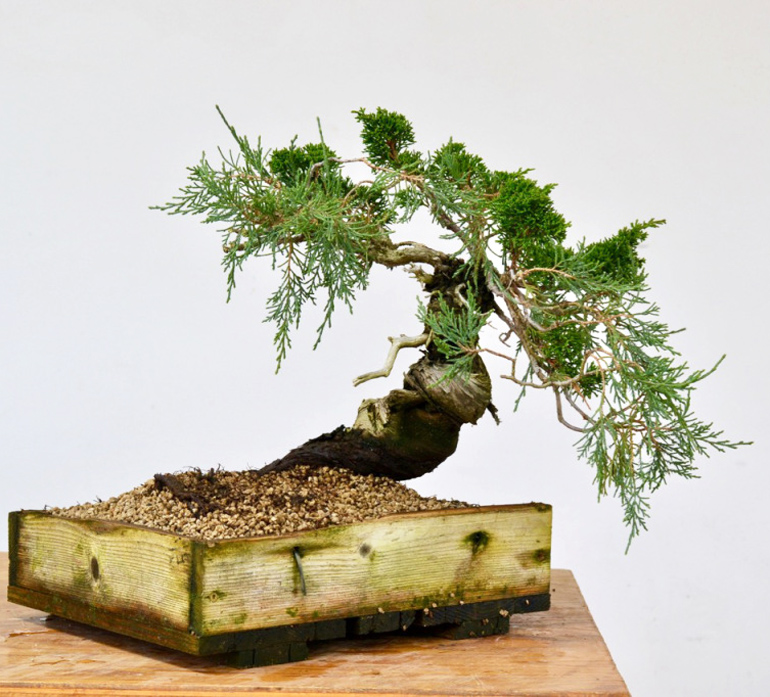
Before. Here's what Michael started with. And here's what he wrote... "The trunk is a Rocky Mountain Juniper (thank you Backcountry Bonsai, Steve and Dan) and we it grafted it with itoigawa about 4 years ago. The tree is only about 6" high, and itoigawa seemed like the right choice for the fineness of the foliage and the small tree size."
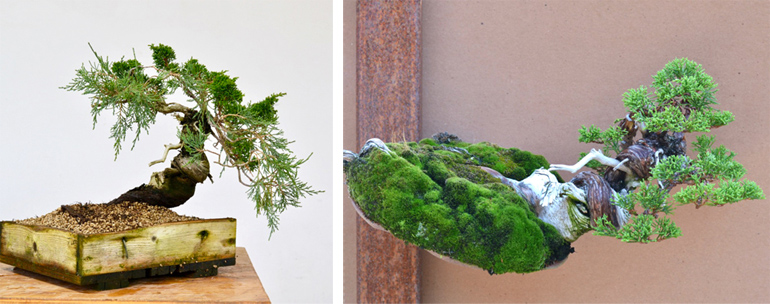
Before & after
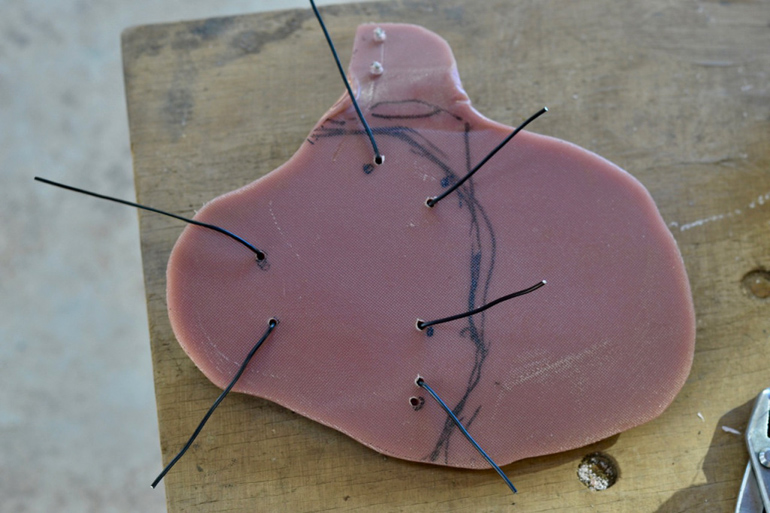
Michael likes to plant on thin trays. He doesn't say, but I'm guessing it's a synthetic material

Close up. Cropped by our cropper-in-chief
The Best American Bonsai & Other Compelling Reasons to Wake up in Rochester
This twisty bunjin style collected Buttonwood (Conocarpus erectus) shows what can happen when a tenacious tree hangs onto a Florida shoreline that is ravaged by repeated tropical storms and occasional hurricanes. It belongs to Doug Hawley who has been refining this tree for about ten years (this was written in 2009). Height 28" Pot by Sara Rayner
To whet your bonsai appetites, I’ve decided to devote all our posts between now the 6th U.S. National Bonsai Exhibition to North American Bonsai
We’ll start with three photos which were originally from a book titled North American Bonsai* (out of print), that we originally featured in a post by the same name. The date was February 2nd, 2009. A mere 14 days after our first post, Welcome to Bonsai Bark
But first… what if you woke up on September 8th and realized that you are nowhere near Rochester and the 6th U.S. National Bonsai Exhibition? Ugly eh? However, there is a simple solution… it’s not too late to make you plans. You’ll thank me for the reminder, and we’ll all thank Bill Valavanis and all the other dedicated folks, who made it happen.
Continued below…
–
This old Sierra Juniper (Juniperus occidentalis) with it's super shari, belongs to John Romano. Height 42"
Continued from above…
In addition to the spectacular bonsai a the 6th U.S. National Bonsai Exhibition, there’s those other compelling reasons (from the title above)… connecting and reconnecting with your fellow bonsai artist and lovers (bonsai lovers!), the demos (more on these soon), the valuable trees and bonsai necessities offered by all the hard working vendors (visit our Stone Lantern booth and tell us you read this far, and we’ll give you a gift). There’s more, but we’ll leave the rest to your imagination
Here's a great old yamadori that will knock you socks off (well, mine at least) when you realize that it's an Eastern White Pine (Pinus strobus). They are the dominant tree in much of the northeastern US and eastern Canada, and yet, I've never seen a real quality Eastern White Pine bonsai until now (this is still the case almost ten years after I wrote this), as their largish needles, long internodes and upright growth habit makes good bonsai stock extremely rare. The tree belongs to Martin Schmalenberg. Height 42"
*North American Bonsai was published by the American Bonsai Society and compiled and edited by Martin Schmalenberg
American Larch & Other Bonsai at the 6th U.S. National Bonsai Exhibition
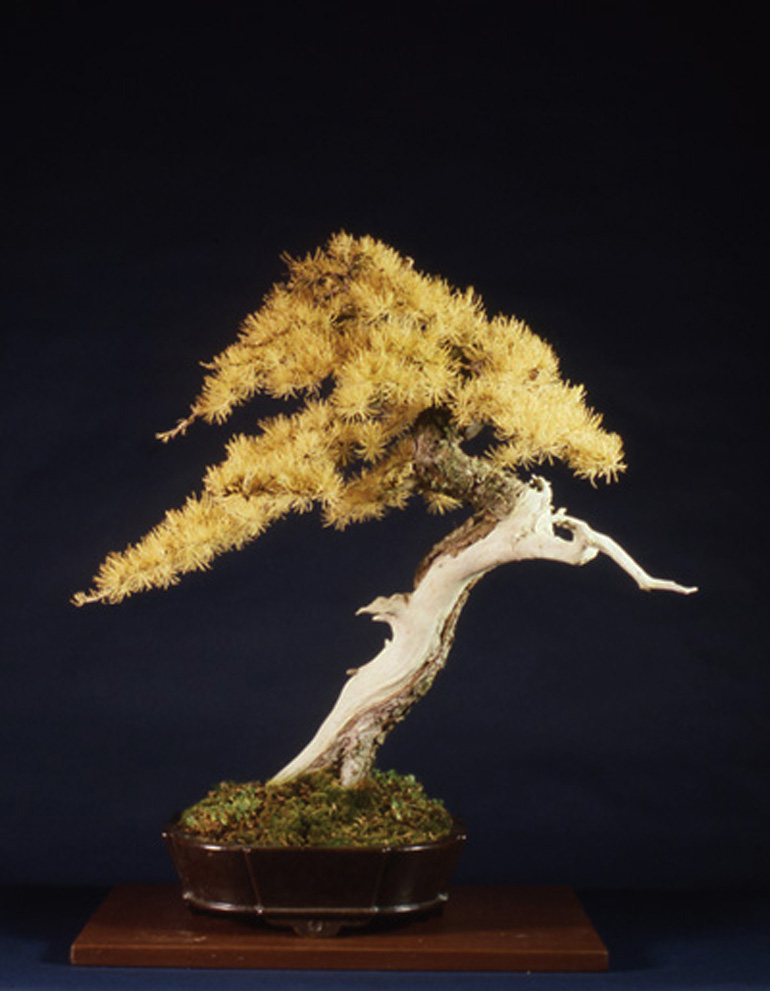
A famous American larch (Aka Tamarack - Larix laricina) in full fall color (larch are one of a small handful of deciduous conifer in the world). The artist is 'Larch Master' Nick Lenz. It's a massive tree. Much bigger than you might think based on this photo
We (Stone Lantern) are bringing about 30 field grown larches to the 6th U.S. National Bonsai Exhibition (September 8th & 9th in Rochester, NY – the one bonsai event not to miss!)
Almost all of our larches are 15 to 20 years old and most are in nursery pots and have had minimal training. Perfect for the do-it-yourself crowd. We’ll also have a few small Shimpaku junipers and two or three Ficus. And of course our famous Roshi Bonsai tools, plenty of bonsai wire at the lowest prices anywhere and lots of other essential bonsai items
We’ve got a few mediocre cell photos below (better than nothing) and some text on larch care that you might find helpful.
Larch care for the American larch (Larix laricina)
Location. Larches do best in full sun, though you can grow them in light shade. Heavy shade doesn’t work that well and indoors is taboo
Continued below…
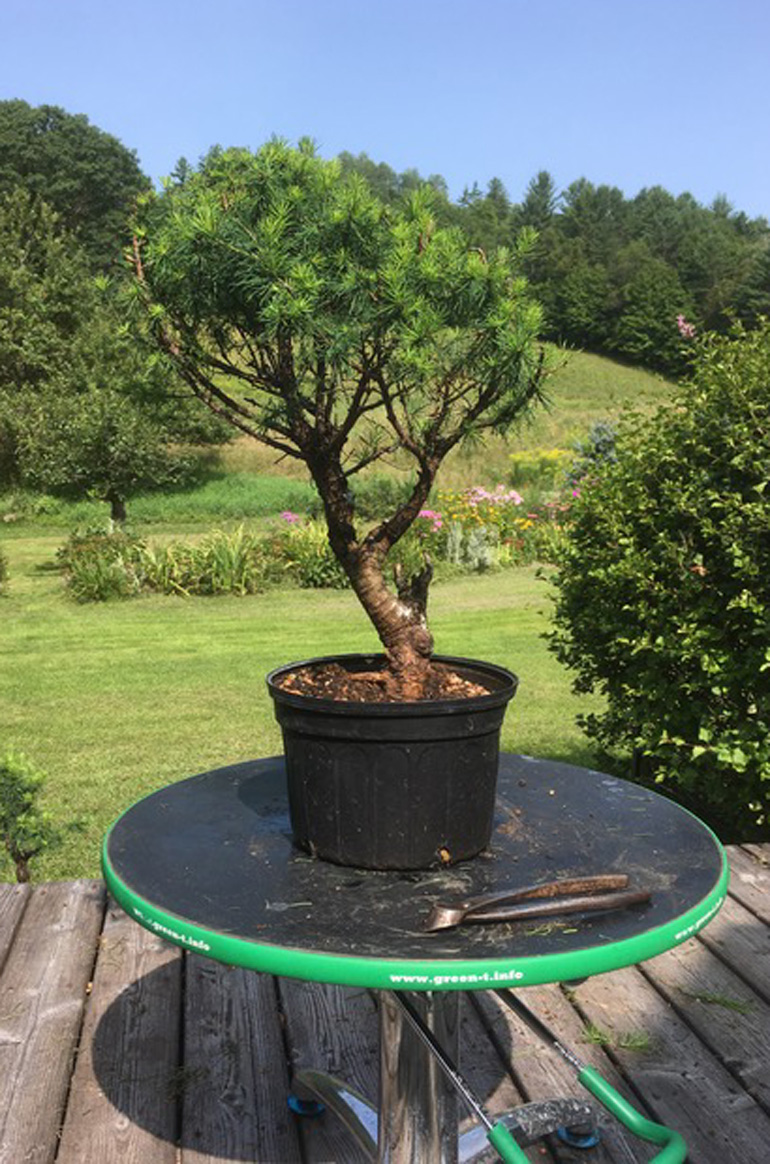
Here's one on a Green T turntable that we're bringing. We'll bring the turntable too. And remember, these were shot on my cell by a rank amateur
Larch care continued from above
Winter care. Don’t forget, larches are one of a handful of deciduous conifers, so don’t panic when the needles turn yellow and start falling off (in the fall of course). Larches are extremely cold hardy and require an extended period of freezing temperatures each winter. If healthy, you can keep yours outside in a place that is sheltered from the wind down to single digits Fahrenheit (5F is -15 celsius). More protection is good idea in very cold climates. A cold frame or unheated building is recommended though a good blanket of snow can work. During winter thaws, check to the soil to make sure it isn’t bonsai dry
Watering. In nature larch grow in moist areas, though when in pots, a soil that drains well is best. It is good to allow your larch to dry down between waterings (this helps avoid root rot and encourages root growth) but beware!… though larches are fairly drought tolerant in the wild, it’s a different story in pots. Be careful not allow the soil to become bone dry and stay that way, especially in the hot sun
Continued below…

Here's another one on our Green T
Continued from above…
Fertilizing. During the growing season we feed our larches regularly. We prefer mild well-balanced fertilizers like Green Dream and Dyna-gro Bonsai Pro. In the late summer we continue feeding with Green Dream and gradually taper off until mid to late fall. These late feedings help strengthen the roots for the coming winter and can also help thicken the trunk and lower branches
Pest and diseases. Larch tend to be fairly pest and disease resistant, though like most plants they have their vulnerabilities. Rather than go into detail here, we suggest you do an online search for specifics. Here’s a good place to start
Continue below…

Here's another one (you can sort of see some others others we are bringing). Apologies for the fuzz
Continued from above…
Repotting. When conditions are right, larch roots can grow quite rapidly, so fairly frequent repotting is a good idea. Here in northern Vermont where the growing season is short, every second or third year works. Larch aren’t crazy about root disturbance, so we don’t suggest bare-rooting or extreme root pruning
Pruning. Healthy larches grow rapidly in the spring and summer so fairly frequent pruning is necessary. Pruning any bonsai properly for health and beauty is large subject, so we won’t go into detail here. There are online forums etc where you can pick up valuable information on larch pruning, wiring, propagation and more. You might start with Harry Harrington’s bonsai4me
We’ve tried to hit the essentials you’ll need to get started. There is of course, more you’ll need to learn to be successful with larch or any bonsai
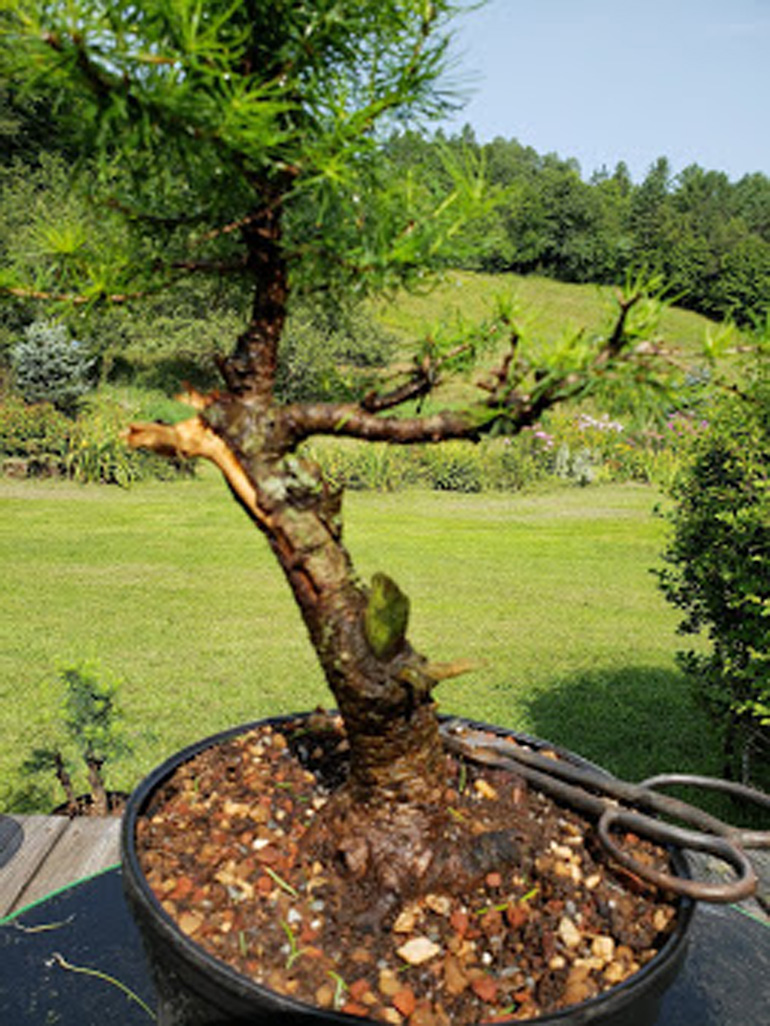
Close up. Notice the nebari. A sure sign of age. The shears are Okatsune Bonsai Shears. My favorite

Another close up. Rugged bark is another sign of age. Same Okatsune bonsai shears
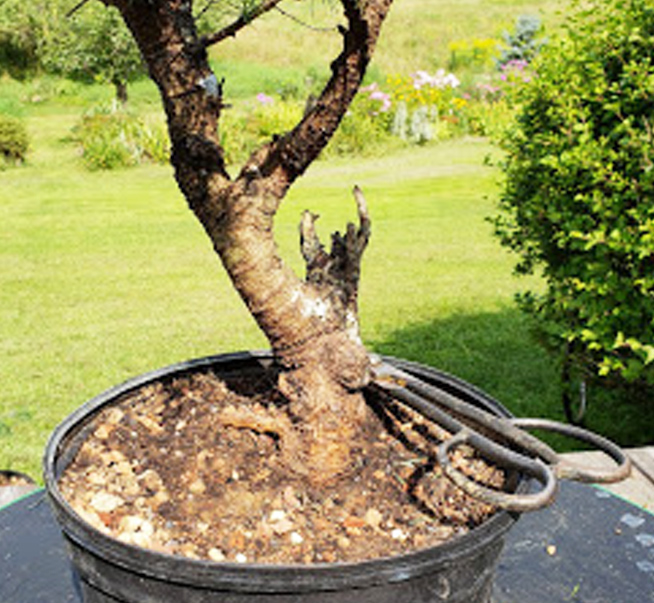
One more. Same shears
Before & After Scots Pine – The trunk provided a good start, but the rest sorely needed Harry’s help
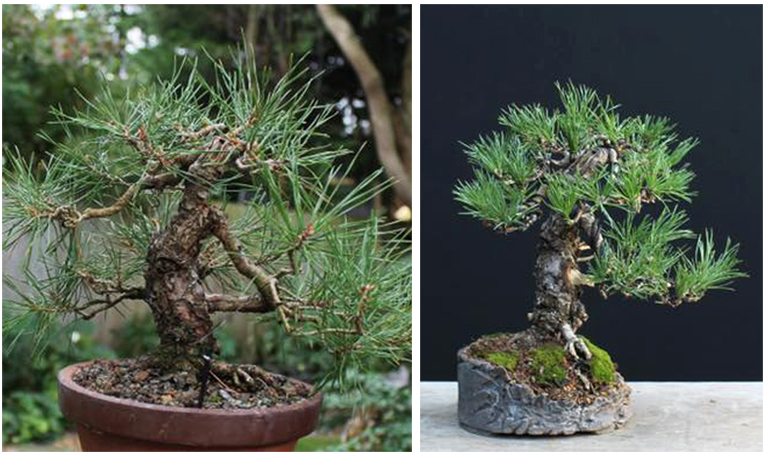
Before and after of a Scots pine (Pinus sylvestris) by Harry Harrington. The trunk provided a good start, but the rest sorely needed Harry's help
Harry Harrington has long been one of our main sources for good bonsai material (for good bonsai books too). Though there is room for a number of approaches to styling and refining bonsai, I like the rugged natural style expressed in this little Scots pine. It’s a hallmark of many of Harry’s trees, though he sometimes drifts into a more highly stylized, but equally impressive look. Especially with some of his carving (take a look at the English yew below for some serious carving)
–

Before. Great trunk but a bit of mess otherwise

After. Tamed but not over-styled. Perfect pot too
Here's Harry's caption from his fb timeline... "One last post before I finish getting ready to head to the mountains tomorrow and the upcoming Scandinavian Bonsai Retreat 2 with Thor Holvila, see you guys up there! Scots Pine Yamadori with Accent-Harry, height 6”/15cm. Bonsai pot by Victor Harris of Erin Pottery"
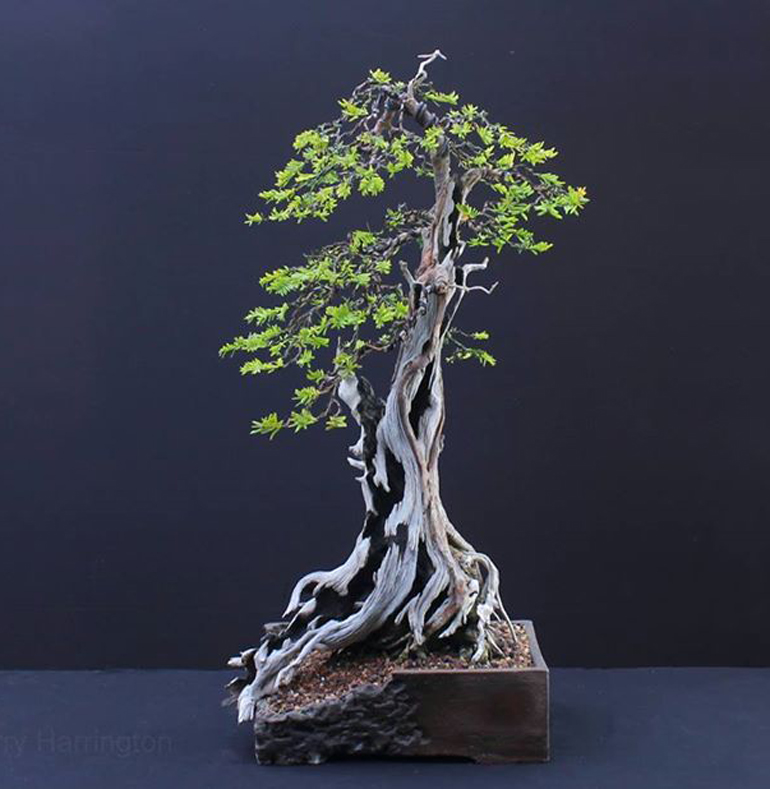
An entirely different look (from a post we did back in 2016). Here's what Harry said about this tree... "Finally, work on my Taxus baccata/Yew bonsai completed with the branches wired and laid-out. Height 25"/61cm, trunkbase (inc root jin) 12"/30cm. Pot by Victor Harris of Erin Pottery."
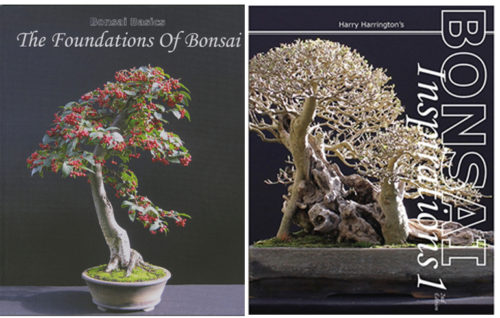
Want to learn how Harry does it? Here's your chance. Both of these easy to follow, down to earth how-to books can be found at Stone Lantern.
Japanese Maple Bonsai Through Three Seasons
Japanese maple in its fall brilliance. From the Omiya Bonsai Art Museum
Continuing with Maples at the Omiya Bonsai Art Museum we came up with this one from our archives. It’s a single Japanese maple in three stages of it’s annual migration through the seasons. There’s a lot to like about this tree but there’s one question that arises; have you ever seen a bonsai with such a flat top? This is especially pronounced in the fall and summer photos
Continued below…
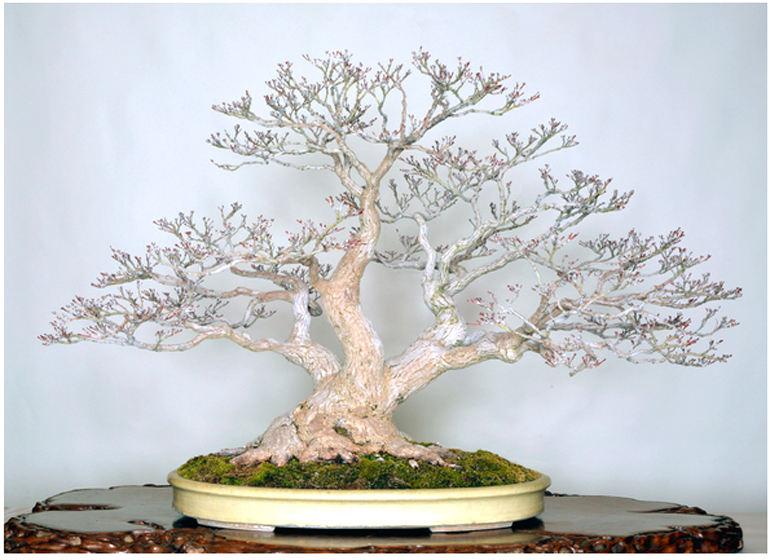
Winter. Maybe this is the best way to appreciate this tree
Here’s what someone at the Omiya Bonsai Art Museum wrote in a rather poetic fashion, about this powerful old tree… “The three trunks rising from the fat and robust roots of this Japanese maple bonsai fan out in the shape of a fan. During the months between the start of summer and coming of fall the branches of the tree grow thick with leaves as if to cover a great swath of land with its shade. In the autumn the changing of the leaves leaves the bonsai looking like a great red hill, which is the meaning and source of the tree’s name, Kouryou.”

The fullness of summer

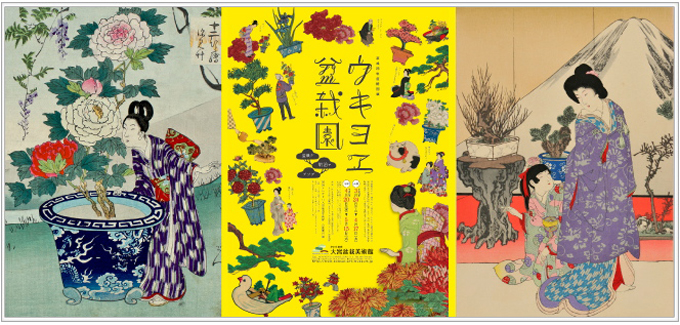 Paintings at the Museum. All three panels show bonsa
Paintings at the Museum. All three panels show bonsa